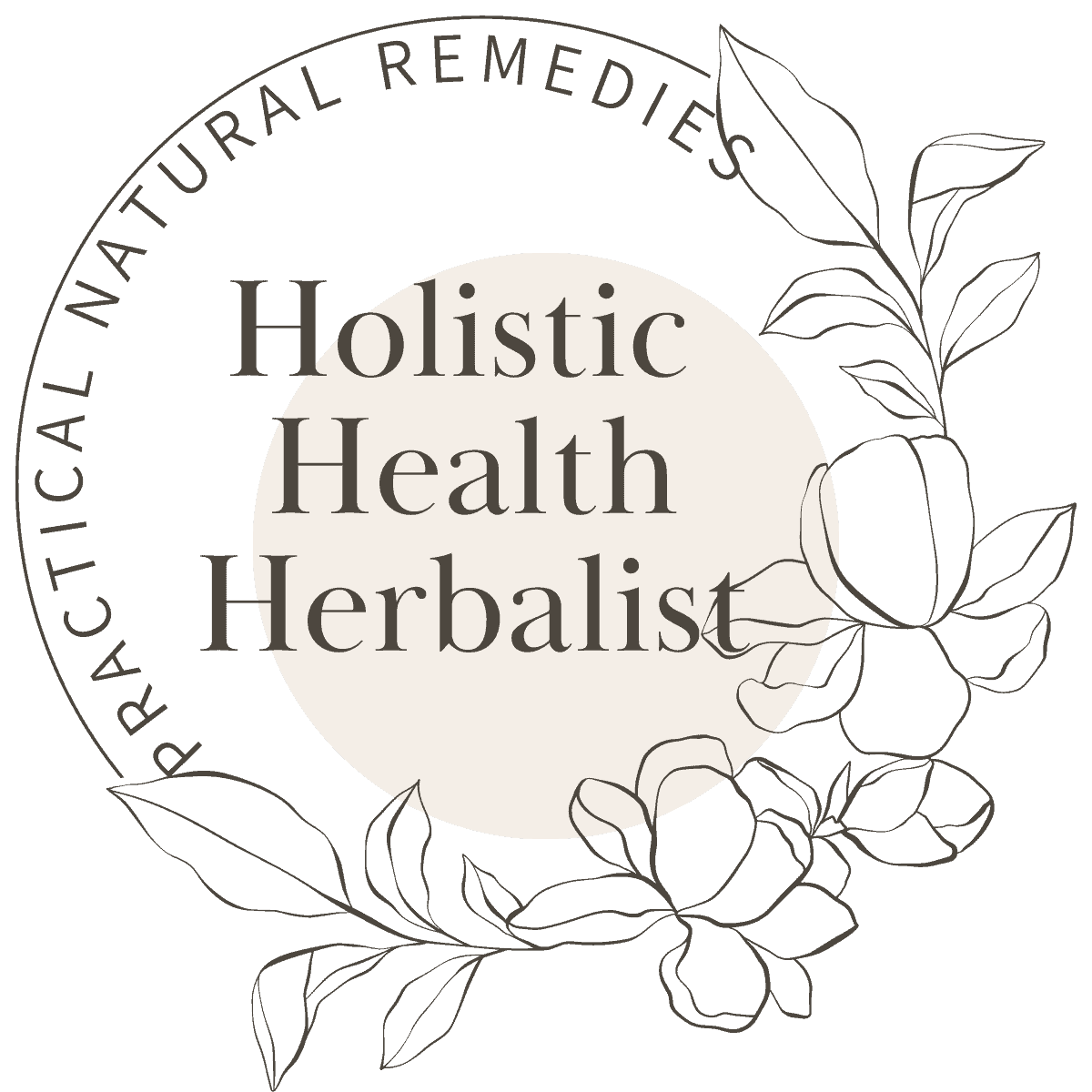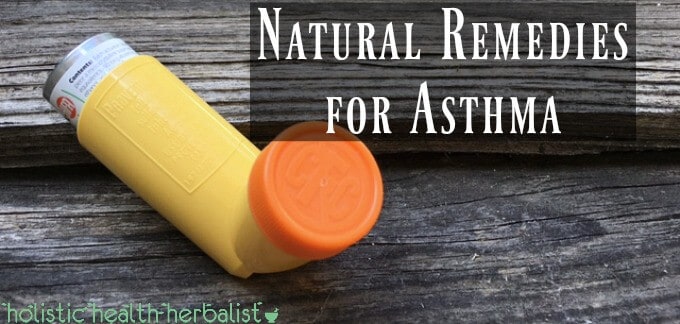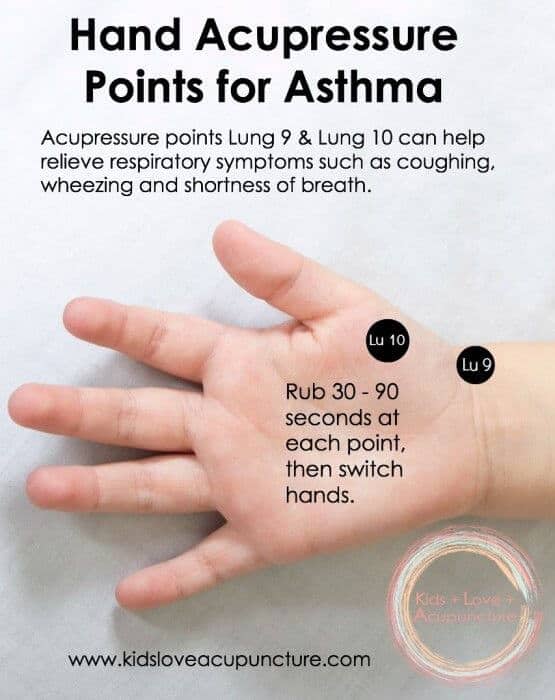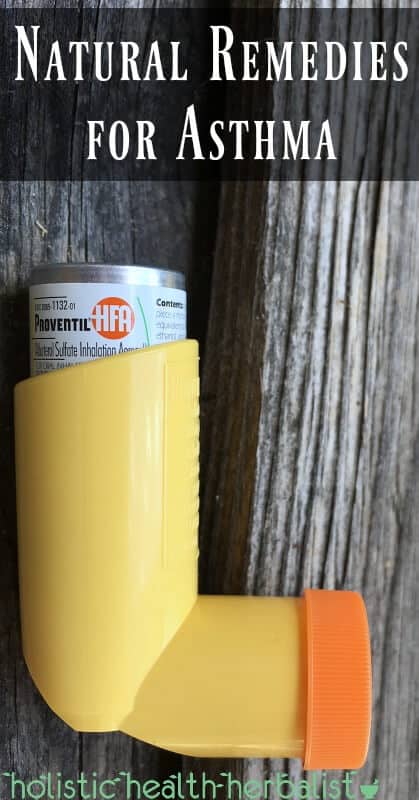For many, asthma is the bane of their existence. For others, it’s mild and episodes are few and far between. It can flare during exercise and other strenuous activities or can react to chemicals, allergens, or emotional stress. In all instances, asthma can be a bit scary to deal with even for veterans like myself who’ve had asthma for most of their lives.
What is Asthma and What Causes it?
Asthma is defined as the reversible narrowing of the bronchioles through inflammation of the mucus membranes or contraction of the diaphragm. This causes difficulty breathing, a tightness in the chest, prolonged expiration phase, coughing, and wheezing with excessive phlegm or mucus. Since asthma is a chronic condition with an irregular pattern of exacerbations and remissions, knowing how to control it is essential.
There are two types of asthma; extrinsic and intrinsic.
Extrinsic/Atopic Asthma
Extrinsic or atopic asthma is related to a hypersensitivity reaction of the immune system due to increased IgE (immunoglobulin E) serum levels in response to allergens. These antibodies overreact and can often trigger an attack. This type of asthma is also closely linked with the presence of hay fever, eczema, hives, and migraine. Those with atopic asthma usually have a family history where asthma has been present. For example, my mother has atopic asthma, I have it, and so do my siblings (though to a much lesser degree than myself).
Intrinsic/Nonatopic Asthma
Intrinsic or nonatopic asthma is associated with a bronchial reaction to chemicals, cold air, exercise, infection, and emotional distress, not an antigen/antibody stimulation.
The Cause of Asthma, its Triggers, and its Stages
The Cause of Asthma
In children, asthma can be suspected if there is a recurrent cough, trouble sleeping due to shortness of breath, wheezing or coughing, bouts of coughing that get worse with a respiratory infection, delayed recovery from respiratory infections, limited play or exercise due to trouble breathing, or fatigue caused by poor sleep.
Although most people with atopic asthma grow out of it before they’re 20, there are those who continue to have asthma or may even develop asthma much later in life. Asthma that develops after 20 is known as adult-onset asthma and can be caused by allergies (especially to cats), certain viruses and illnesses, hormonal flucuations especially in those who are pregnant or are going through menopause, chronic heartburn or GERD, or those who are exposed to environmental irritants. It can also continue on from childhood.
For both children and adults with extrinsic or intrinsic asthma, the treatments are the same.
Somehow I think I have both types of asthma since I have ongoing hay fever symptoms, difficulty breathing during exercise, am very sensitive to anything that scratches my skin, and am super sensitive to chemicals, temperature, and emotions. Yay me. Can anyone else relate? And if you’re wondering, I’ve had asthma since before I was 10 years old.
Asthma Triggers
Believe it or not, there is actually no known singular cause of asthma, but there are definitely several factors that may trigger an attack.
Common asthma triggers include:
• Allergens such as pet dander, pollen, cigarette smoke, ingested allergens, etc.
• Cold air
• Cold symptoms such as an upper respiratory tract infection
• Emotional distress – i.e. bereavement etc.
• Environmental pollution – irritant gasses, smoke, etc.
• Exercise – symptoms can occur during or after especially when running
• Food additives
• Hormonal changes
• Humidity and temperature changes
• Medications – colored/dyed pills
• Molds
• Stress
• Time of day – asthma is usually worse at night
• Yeasts
The Stages of an Asthma Attack
The symptoms of asthma differ greatly in frequency and degree from person to person and can be mild to severe. I have characterized the four different stages of an asthma attack for quick reference below.
1. Mild – slight wheezing and dyspnea (difficult or labored breathing), adequate air exchange
2. Moderate – marked wheezing, respiratory distress at rest, hyperpnea (increased depth and rate of breathing), use of accessory muscles (abdominal muscles)
3. Severe – marked respiratory distress, cyanosis (bluish tinge to the skin, especially the nail beds and lips), marked wheezes or absent breath sounds
4. Respiratory Failure – severe respiratory distress, lethargy, confusion, pulsus paradoxus (drop in blood pressure), and use of accessory muscles
If you or someone you know is having an asthma attack, especially if it’s a stage 3 or 4, you MUST seek medical help as alternative methods will not replace emergency support.
How to Control Asthma Naturally
Here are a few lifestyle changes you can make to help control your asthma no matter which type you have.
1. 90% of children with atopic asthma have a positive response to skin pricking with dust mite extract.
2. Avoid dairy and processed foods.
3. Consider removing carpets and rugs if dust and dust mites trigger your asthma.
4. Don’t smoke.
5. Exercise regularly using mild to moderate techniques such as swimming, walking, yoga, tai chi, etc. that work for you (this has been a huge factor in strengthening my lungs)
6. Identify your allergies and develop a lifestyle where you can easily avoid them. i.e. Avoid foods you’re sensitive to, swap out household cleaning items with healthier alternatives, keep dust and mold under control, etc. (for me, switching to natural detergent and dryer sheets and using a HEPA filter vacuum cleaner helped)
7. Keep your living space clean and dust free.
8. Take control of your emotional responses since extreme emotions can trigger an attack. The lungs are closely related to emotions (think of crying or laughing).
9. Those with atopic asthma should avoid exposure to pets/domestic animals if they are sensitive to them.
10. Use meditation and deep breathing to open and expand the lungs. This will keep your muscles from tightening as you age since lung capacity decreases due to stiff muscles.
11. Wash your bedding weekly as dust mites can trigger asthma. (use allergy-proof sheets and pillowcases)
Natural Remedies for Asthma
Now that you have a better understanding of asthma, its symptoms, and a few lifestyle changes to help control it, it’s time for the natural remedies!
I have used these myself over the past few years and I haven’t needed to use my inhaler more than a handful of times. This is a huge improvement compared to needing two separate inhalers on a daily basis. I call that success! As always, you know your body best! What works for me may not work for you or to the same degree.
Here’s a few of my favorite natural remedies for asthma:
1. Himalayan Salt Inhaler
Himalayan salt inhalers have become an absolute staple in my all natural protocol for treating asthma. When inhaled, teeny tiny salt particles coat the bronchial tissues and help relieve inflammation, reduce mucus, balance moisture levels, and help prevent irritation in the lungs. The best part about salt inhalers is they’re totally safe to use, even for children. I recommend starting out using salt inhalers as an addition to your current protocol and see how it works out for you since YOU know your asthma best.
I use my inhaler every night before bedtime while reading for 20 minutes. You can read more about the amazing benefits of Himalayan salt inhalers and how to use them here.
2. Essential Oils
Essential oils are amazing remedies to use for asthma and their effectiveness depend on three things:
• The presence of an infection
• Emotional factors
• Allergic response
Asthma precipitated by an infection like a cold, flu, bronchitis etc. with copious mucus secretions that is easy to expectorate, is best treated with essential oils like eucalyptus radiata, cajeput, myrtle, lemon, and spike lavender. These oils will open up the lungs and cut through mucus helping you get clearer airflow.
Asthma accompanied by thick viscid mucus that feels stuck and is hard to expectorate is best treated with essential oils like aniseed, fennel, hyssop, rosemary, and peppermint. These oils all have strong expectorant qualities that will help loosen tenacious buildup that refuses to come out.
Asthma that is aggravated by an allergic response can be calmed using essential oils with anti-inflammatory properties like lavender, helichrysum, and roman chamomile. Simply smelling these oils straight from the bottle have been shown to help calm a reaction.
One of the best essential oils for preventative treatment is frankincense as it relaxes the individual and slows and deepens breathing.
You can add 1-2 drops of any of these essential oils to your salt inhaler for added benefit, though I highly recommend eucalyptus and peppermint. You can learn how to make my DIY Vapor Rub here for easy application before bedtime.
3. Herbs
Using herbs that are relaxing and antispasmodic in nature like valerian, kava, or lemon balm at night, is a great way to get better sleep if your asthma wakes you often. Using herbs that support respiratory health is another great way to help control asthma in the long run as they will strengthen the lungs and help keep inflammation down (I've listed some of these below). While herbs will do little during an attack, they will help lessen the severity and may even prevent an attack from occurring if used consistently.
The best herbs for asthma include:
• Astragalus – this herb strengthens the lungs and helps prevent respiratory infections that can trigger asthma.
• Cordyceps – reduces bronchial secretions, improves lung function, and energizes the body.
• Garlic – anti-inflammatory, clears mucus and supports immunity.
• Ginger – anti-inflammatory, clears mucus and supports respiratory health.
• Lobelia – a strong anti-spasmodic and expectorant and one of the best herbs for asthma and other lung conditions. (should be used under the guidance of an herbalist/naturopath)
• Reishi mushroom – strengthens the lungs, sedates hyperactive immune cells that create allergies, and helps control stress.
• Slippery Elm – this demulcent herb eases irritation, soothes the lungs, and brings up phlegm.
Use as directed.
4. Supplements
Taking supplements that support and strengthen the respiratory system is another great way to lessen the chances of an asthma attack.
Some of the best supplements include:
• Choline – reduces the frequency and severity of asthma and reduces the need for bronchodilators
• Lycopene – As been shown to significantly reduce asthma symptoms in those whose asthma is triggered by exercise. (this supplement isn't just for men's health!)
• Magnesium – relaxes the bronchial tubes and improves overall lung function.
• Pycnogenol – anti-inflammatory affinity for the respiratory system, improves lung function, and reduced asthma symptoms.
• Vitamin C – lessens bronchial spasms and has anti-allergy benefits.
• Dr. Christopher’s Herbal Formula for Lungs and Respiratory Tract – a great all around supplement that alleviates irritation in the respiratory tract and lung congestion. I often use it during respiratory colds and infections.
I personally use a lycopene supplement daily to help control my asthma symptoms and it’s probably one of the best natural remedies for asthma I have found.
Use as directed.
5. Diet
Diet plays a huge role in the severity of symptoms of both atopic and nonatopic asthmatics and it’s important to identify foods that may provoke a reaction.
Even if you don’t necessarily have an allergy to a specific food, you may still react in ways you may not realize. One of the main perpetrators of triggering an attack are dairy products. Dairy, especially the casein in cow’s milk, has an affinity for encouraging mucus production that blocks the bronchial tubes and increasing inflammation in the lungs. Eggs are another trigger and are best avoided as much as possible as most people are allergic to egg whites.
Eating foods that contain a lot of additives, sugar, salt, food coloring, sulfites, MSG, and preservatives can often trigger a reaction as well and should be avoided as much as possible.
The best rule of thumb is to eat whole unprocessed foods that don’t promote mucus production like fresh fruits and dark leafy vegetables, whole grains, nuts, seeds, and lean grass fed meats.
Adding in plenty of fresh garlic, onion, turmeric, and ginger to your daily meals is a great way to incorporate anti-inflammatory foods and encourage clear airways. Learn how to make my amazing ginger tea here for bronchial health and immunity support.
Staying hydrated will help keep mucus thin and easy to expectorate.
6. Pressure Points
One of the best natural remedies for asthma that doesn’t cost a dime is knowing and utilizing pressure points on the body.
There are several different pressure points for asthma that can help alleviate symptoms in a matter of minutes. Take a look at the picture below to see where some of these points are located:
Here are a few I have tried with success:
• Collarbone
This pressure point is located 3 fingers widths below the collarbone both right and left. Pressing these points with your index and middle fingers for 3-4 minutes helps relieve chest congestion, tension, and emotional distress during breathing difficulties. These points are marked L1 in the picture below.
• Breastbone
These points are located in the hollow beneath the collarbone both right and left. Applying pressure with your index and middle fingers for 5 minutes on these points will relieve chest congestion, coughing, breathing difficulties, and anxiety. These points are marked Ki 27 in the picture below.
• Shoulder Blade
This point is one finger width below the top of your shoulder blades, right between the scapula and the spine. Applying pressure to these points for 3 minutes relieves sneezing, coughing, asthma symptoms, and severe muscles pains in the neck and shoulder. you can see where these pressure points are in the picture below.
• Base of The Thumb
The meaty part at the base of the thumb near the wrist is a pressure point that relieves shallow and difficult breathing, swollen throat, and coughing. Press it for 5 minutes for relief. This point is labeled Lu 10 in the picture below.
• Wrist
Directly below the base of the thumb pressure point is a point on the wrist that feels like an indentation or groove. Press it for 3-4 minutes to relieve coughing and other asthma symptoms. Switch to the other wrist and repeat. This point is labeled Lu 9 on the picture below.
• Throat
This pressure point is directly beneath the Adam’s Apple and feels like a slight indentation. Press on it slightly and hold for 5 minutes to help open the lungs. Pressing this point three times a day is said to improve asthma symptoms tremendously after two weeks.
What have been your tried and true natural remedies for asthma? Let me know in the comments!











Susan TREVINO says
Four years ago I experienced a severe breathing problems. A year later, it worsened and I was diagnosed of COPD. I came across Herbal HealthPoint (ww w. herbalhealthpoint. c om) December, 2018 and learnt about their successful herbal therapy for COPD. I immediately started on the COPD treatment; i began to notice a reduction in symptoms till it all vanished. I feel better and breath better. I Just wanted to share for people suffering from this horrible lungs disease.
Pjotr Bos says
Hello Tash, thank you very much for this article. I'm struggling with asthma and according to the MD I need to use a corticosteroid inhaler. But I am anxious to use those. I have bad experiences with corticosteroids in the past, so I am going to try natural medication. The information in your article is exactly what I needed. A nice compact and complete overview. Kind regards,
Pjotr
Heather says
This article was so helpful and led me to further research which provided even more clarity. Under supplements, you suggest choline and after further research I discovered antihistamines are anticholinergic! I do want to let you know that the supplement for choline linked in the article contains titanium dioxide. This for me is a deal breaker for that particular brand, but am looking into other brands! Thanks again!
Tash says
Thanks, Heather! I updated the link to a cleaner product!
Richard Friedel says
To get rid of asthma study acupressure.
Asthma is in fact relatively easily cured with acupressure. Google for
gv26 important.
and see how lip pressure relaxes lung airways. So inhale consciously and mindfully through the nose pulling the lips together and not asthmatically wth mouth breathing in step with breathing and not occaisionally .
Breathe into the belly and keep clear of sprays, if needed with a doctor’s help. Clenching fists also helps using acupressure. See video gimnastika strelnikovoi peredniy shag
Richard Friedel says
Asthma is relatively easily cured with acupressure. Google for
gv26 important.
and see how lip pressure relaxes lung airways. So inhale consciously and mindfully through the nose pulling the lips together and not asthmatically wth mouth breathing. Breathe into the belly and keep clear of sprays, if needed with a doctor's help. Clenching fists also helps using acupressure.
Richard Friedel says
It is a myth that asthma is well researched. Acupressure is overlooked. Do Google search for "gv26 important" without inverted commas.
Michele says
Great article! I just read it and am going to try some of these suggestions. Do you think that moving from one place to another can be a huge factor?? I moved from one province to another and within 4 months got VERY sick!
The fact that in Alberta, my Ventolin inhaler would last me about 6-8 months, and then moved to Saskatchewan and I'm going through 3 a month! Now I'm scrambling to get back to Alberta! I'm hoping the move back in the spring will improve my asthma and I can get back to living again. This has been a 4 year nightmare for me!
Tash says
Absolutely!
When I lived in Japan, my asthma was practically non-existent. Once I moved back to LA, my asthma went crazy and I have had chronic allergies ever since =/ These remedies DO help a lot though! I don't need to use my inhaler very often, maybe a few times a month max! But, everyone is different, so pay close attention to your body if you decide to try them out 🙂
Michele says
Awesome! Thank you Tash!!
I wanted to find out if you knew anything about inhalers with natural remedies in them as well. I.E. CBD oil or other asthma inhibitors.
Cheryll Bennett says
I have a horehound plant (European medicinal herb). I've read that if you use it (teas, tinctures, syrups, lozenges) it helps the airways/lungs. As soon as mine buds (which is when you harvest) I"m giving it a shot. But you can also buy it.
Tash says
That sounds great Cheryll! Horehound has always worked well for me too, especially during allergy season 🙂
Sutton Turner says
I never thought of using essential oils as an asthma treatment. My brother has really bad asthma and is always looking for relief. Thank you for the information on asthma treatments that are natural.
Richard Friedel says
Asthma from the kiss point perspective. The kiss point is between the nose and the upper lip and correspnds to the acupressure point gv26. Apart from the romantic or erotic workings it is also responsible for relaxation of the lung airways and turns off asthma. See bibliography http://altered-states.net/barry/newsletter411/
There are many acupressure points for asthma. See for example Bowen Therapy and Gesret method the presence of such a point on the lips means that deep sharp nasal inhales can serve as a treatment for asthma. This makes good sense since the disaease often comes with mouth breathing without any stressing of te lips.See "Strelnikova decrease asthma" for a system used in Russia based on this reflex loop principle.
Ann Davis says
I have tried this one and love the response I get. Also the salt inhaler is wonderful. Using the pressure points works also. I would recommend these.
Tash says
Thanks for your feedback Ann 😀
Kylee says
Thank you! This article is extremely helpful. Do you use the lycopene supplement that you linked?
Tash says
Yes!
And you're very welcome Kylee 🙂
TraceyK says
Something that I never see mentioned on these types of lists is the use of sage. Making a simple tea out of the bottled sage leaves that are already in your spice cabinet (i tie mine up in a coffee filter) is the quickest way to snuff out an asthma attack if you don't have access to a rescue inhaler. It has saved me from having to go to the emergency room in the middle of the night several times. I absolutely swear by it.
Tash says
This is some awesome advice TraceyK! Thank you so much for sharing! I'll have to keep this in mind for any future asthma attacks.
lupe says
what kind of sage? I know there more then one kind thank you
Tash says
You can use the sage you find in the spice aisle at your local grocery store 🙂
Tess says
How do you make the tea?
John says
I've had success using both lavender and peppermint essential oils in controlling my asthma. My asthma tends to flare up when the seasons change (particularly fall to winter), and using essential oils (along with some other measures) has been a cost effective way of controlling my asthma. The cost of albuterol inhalers has kept increasing which got me looking for some other alternatives.
Tash says
That's great John! Essential oils have helped my asthma a ton as well!
lupe says
hi could you tell me which essential oil and how do I use them. thank you oh and where can I get them.
Tash says
Hi Lupe!
Just click on the link of the essential oil you are interested in. It will take you to the one I use on Amazon 🙂
Richard Friedel says
Asthma treatment in the US is a medical disgrace. See Mother Jones. "The Asthma trap."December 2004 study by a coalition of health groups showed that nearly a quarter of children with asthma made at least one trip to the emergency room in the past year, and just over half had missed some amount of school or daycare."
I got asthma by mouth breathing as an infant and got rid of it by doing mindful loud sniffs 2 years ago. This presses the lips together and by a reflex arc relieves the bronchi in the chest. This is really a commonplace. For scientific material on this google for "npf perioral"